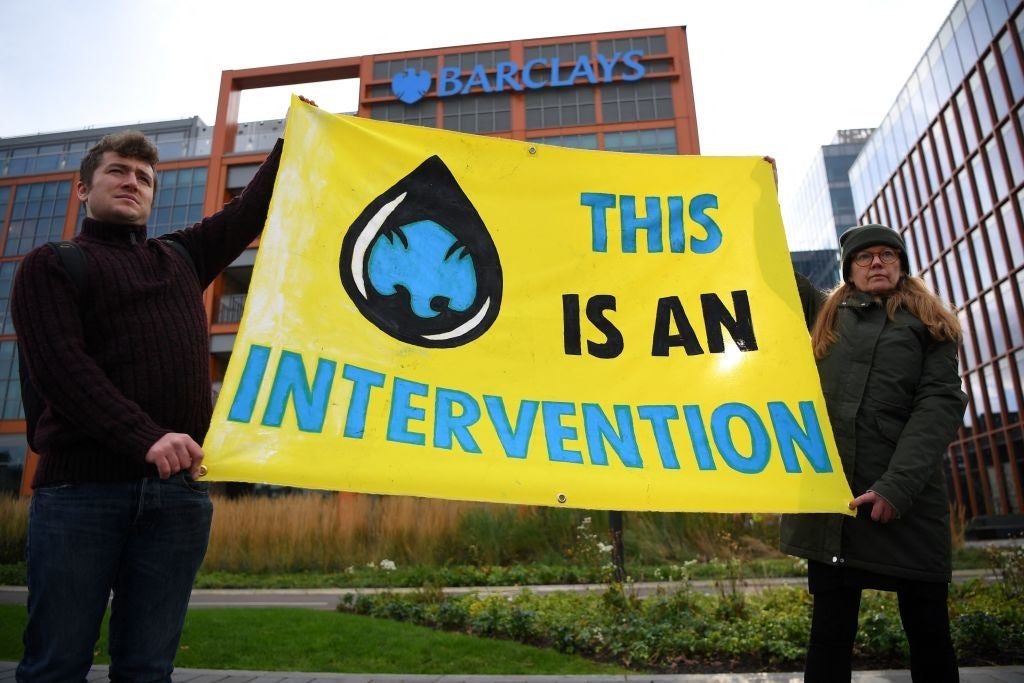
If banks are going to reach net-zero emissions by 2050, they will likely have to set targets to reduce their scope 3 emissions. These make up the lion’s share of banks’ overall carbon footprint as they provide finance to the world’s largest polluters in the form of loans and capital markets facilitation (or underwriting).
Under the Net Zero Banking Alliance (NZBA), which falls under former governor of the Bank of England Mark Carney’s broader Glasgow Financial Alliance for Net Zero, more than 60 banks have now set interim decarbonisation targets for key sectors to be reached by 2030.
Yet these targets contain significant policy loopholes, risking a net-zero overshoot, recent ShareAction analysis reveals. Among the most significant loopholes is the fact that very few banks (only six out of 43 in ShareAction’s analysis) cover capital markets facilitation, a key component of bank financing.
While direct bank loans to fossil fuel companies facilitate their expansion, banks perform another key role, which is overseeing or underwriting either debt or equity transactions, ensuring that the ownership is both legally executed and that there are ample investors to provide capital.
The huge sum of banks’ scope 3 emissions
While capital markets facilitation is classed as a service rather than a financial transaction, it is crucial to ensuring that transactions take place. According to the Partnership for Carbon Accounting Financials (PCAF), underwriting is a “separate and significant metric” from lending, which “exerts material impact on the direction of capital towards economic activities that will allow the transition to net zero no later than 2050”.
In ShareAction’s October 2022 analysis of 43 banks that had set targets under the NZBA, which were selected for their asset size and historically large fossil fuel financing activities, only six – Barclays, CIBC, Goldman Sachs, JP Morgan, TD Bank and Wells Fargo – included facilitated emissions in their 2030 decarbonisation strategies. In more recent analysis by ShareAction of the most influential European banks’ progress on fossil fuel financing, just one, British bank Barclays, included underwriting activities.
How well do you really know your competitors?
Access the most comprehensive Company Profiles on the market, powered by GlobalData. Save hours of research. Gain competitive edge.

Thank you!
Your download email will arrive shortly
Not ready to buy yet? Download a free sample
We are confident about the unique quality of our Company Profiles. However, we want you to make the most beneficial decision for your business, so we offer a free sample that you can download by submitting the below form
By GlobalDataThat is despite underwriting activities accounting for an increasingly large share of a banks’ overall fossil fuel financing.
ShareAction estimates that 57% of total financing provided by the 25 largest European banks to top upstream oil and gas companies from 2016–21 was in the form of capital markets underwriting.
A separate report from the non-profit Toxic Bonds Initiative, published in July 2022, finds that since January 2016, banks underwrote bonds totalling $2.7trn for coal companies and companies leading oil and gas expansion, meaning that “despite climate initiatives such as the [NZBA], many existing climate and fossil fuel policies and targets provide loopholes, either by excluding underwriting or only applying to new clients”.
Labelling this a “potentially huge loophole”, the organisation, along with others like ShareAction, are calling for banks to include all capital markets facilitation activities in their decarbonisation targets.
Significant risk of double-counting
Yet calculating the emissions that arise from facilitated transactions is far from straightforward. The PCAF, which provides the most popular set of emissions accounting standards for banks, endorsed by the NZBA, has not yet developed a methodology for facilitated emissions. It did, however, produce a consultation paper in September 2022 on a potential methodology, which it had been working on since 2021 and which is due to be published in full in early 2023.
In the paper, the PCAF raises several issues that arise from attributing facilitated emissions to specific banks; for example, conceding that it remains an “open question” as to how far the facilitator for a transaction should be held responsible for the emissions compared with its investor.
In addition, in most cases, loans are facilitated by multiple banks using the capital from multiple investors, and because PCAF’s emissions methodology (currently in use for loans) calculates each investor’s share in the recipient company’s overarching emissions based on the company's value, with so many actors involved there is a real risk that emissions could be counted twice between institutions.
Without an existing methodology in place, banks, notably Barclays, have come up with their own methodologies.
In November 2020, Barclays became the first bank to include facilitated activities in a Paris Agreement-aligned methodology called BlueTrack, where it allocates 33% of the emissions of pro rata capital markets facilitation conducted by Barclays to itself, apportioning the remaining two-thirds to investors.
PCAF similarly proposes that banks should use a pro rata methodology, meaning that as facilitating emissions is a process, rather than a one-off transaction like with lending, banks should aggregate all transactions over the year into a single “flow” in order to generate a figure for total facilitated emissions.
[Keep up with Energy Monitor: Subscribe to our weekly newsletter]
As for the question of responsibility, there is some disagreement. NGOs like ShareAction advocate that each bank should account for 100% of the emissions of a transaction it facilitates – compared with the third that Barclays accounts for. The PCAF also sees potential in this but notes that attributing the whole sum of emissions to the actor facilitating the transaction carries “significant” risk of double-counting because the lender will also be counting those emissions as its own.
As such, PCAF proposes a second method, where a weighting is given to different financial activities using the Global Systemically Important Banks (G-SIBs) classification of the relative importance of arranging activity across the whole financial system. According to G-SIBs, underwriting should account for 3.33% of emissions while lending should account for 20% of the total, meaning the attribution for underwriting a loan should be 3.33% divided by 20%, or 17% of the total emissions.
While this method could be critiqued for letting banks get away with not taking full responsibility for their underwriting activities, not to mention the complications that arise from G-SIBs allocations changing frequently, this method would diminish the risk of double-counting.
The PCAF contends that double-counting may not be as large an issue as it at first appears, considering most decarbonisation targets focus on the reduction rate in percentage terms.
Yet the question of double-counting has plagued financial institutions when it comes to emissions calculations. This has frequently been seen with the issue of how asset managers should count scope 3 emissions, with some arguing it is both impossible and risks double-counting for them to be responsible for the downstream emissions of companies.
James Vaccaro, director of the Climate Safe Lending Network, told Capital Monitor last year there are often “philosophical” accounting considerations to make when it comes to taking ownership of supply-chain emissions, as to an extent any emissions beyond scope 1 are double-counting because supply chains overlap.
Until the PCAF’s recommendations for facilitated emissions are published, and likely afterwards, banks will disagree on exactly what proportion of a facilitated loan is theirs to claim. However, acting now, even without perfect data, could make a difference to climate change.







